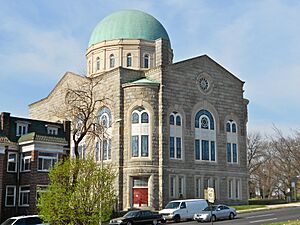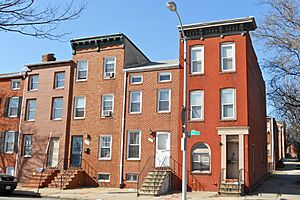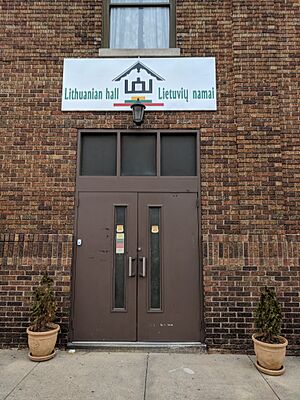History of Lithuanians in Baltimore facts for kids
Many Lithuanians have made Baltimore their home for a long time. Their story in the city began in the mid-1800s. Between the 1880s and 1920s, thousands of Lithuanians moved to Baltimore. They formed a strong community, mostly in an area now called the Hollins–Roundhouse Historic District. To keep their traditions alive, they created churches, cultural events, and special places like a dance hall.
Contents
How Many Lithuanians Lived in Baltimore?
Over the years, many Lithuanians have lived in Baltimore. In 1940, about 2,800 people from Lithuania called Baltimore home. They made up a small but important part of the city's population.
By 1991, it was thought that around 20,000 Lithuanians lived in the greater Baltimore area. This shows how much the community grew. In 2000, about 11,000 Lithuanians lived in the wider Baltimore area.
More recently, in 2013, about 1,000 Lithuanian-Americans lived in Baltimore city. Even though the numbers have changed, Lithuanians continue to be a part of Baltimore's diverse population.
The Start of Lithuanian Life in Baltimore
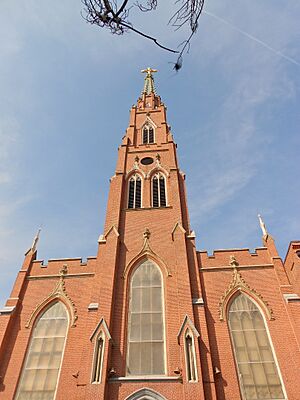
Lithuanians started settling in Baltimore around 1876. A big wave of people arrived between the 1880s and the 1920s. By 1950, about 9,000 Lithuanians lived in the city.
Many of these new arrivals settled in a neighborhood north of Hollins Street. This area soon became known as Baltimore's "Little Lithuania."
Important Groups and Churches
In 1889, a man named Jonas Šliūpas started the Lithuanian Scientific Society in Baltimore. This group worked to promote the Lithuanian language and culture. It was active for several years.
Three Roman Catholic churches in Baltimore have been important to the Lithuanian community:
- St. Alphonsus' (since 1917)
- St. John the Baptist Church (from 1888 to 1917)
- St. Wenceslaus (since 1872)
Today, St. Alphonsus' is the only church still serving as a Lithuanian parish. St. Wenceslaus became a church for Czech people, and St. John the Baptist Church closed in 1989.
Lithuanian Jewish Community
While many Lithuanians in Baltimore were Catholic, a good number were Lithuanian Jews. These Jewish people are also known as Litvaks. They were a big part of Jewish immigration to Baltimore from the 1880s to the 1920s.
The Yeshivas Ner Yisroel, a well-known yeshiva (a Jewish school for religious study) in Baltimore, was started by Jews from Lithuania and Belarus. It teaches in a special Lithuanian (Litvish) style. Litvaks also helped create the B'nai Israel Synagogue.
Baltimore's Little Lithuania Neighborhood
From the 1880s to the 1920s, the Hollins-Roundhouse area became the heart of Baltimore's Lithuanian immigrant community. Because so many Lithuanians lived there, people started calling it Little Lithuania.
Even today, you can still find some signs of the neighborhood's Lithuanian past. One important place is the Lithuanian Hall on Hollins Street. It's a reminder of the strong community that once thrived there.
Lithuanian Culture in Baltimore
Lithuanians in Baltimore have worked to keep their culture alive. They founded places like the Lithuanian Hall. This hall is a place where people can gather and celebrate their heritage.
Many Lithuanians also shared cultural activities with other groups, especially the Polish community.
Annual Lithuanian Festival
Every year, there's a special Lithuanian Festival held in Catonsville. This town is just outside Baltimore city. The festival is a fun event where people can enjoy Lithuanian food and drinks. There are also traditional dances and other items that celebrate Lithuanian culture.
Famous Lithuanian-Americans from Baltimore
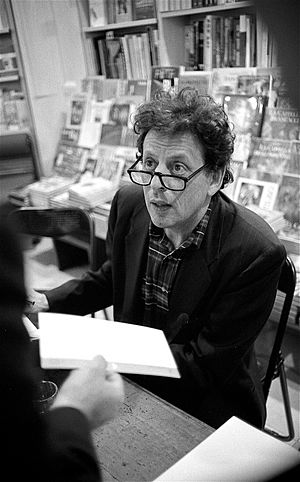
Baltimore has been home to several notable people with Lithuanian heritage:
- Albert Blumberg: A philosopher and political activist.
- Philip Glass: A very influential composer of music.
- Yaakov Kamenetsky: A respected Jewish scholar and rabbi.
- Yaakov Yitzchok Ruderman: A prominent Jewish scholar who founded Yeshiva Ner Yisroel in Baltimore.
- Eli Siegel: A poet, critic, and educator.
- Anne K. Strasdauskas: A law enforcement official who served as sheriff of Baltimore County.
- Johnny Unitas: A legendary professional football player for the Baltimore Colts.


